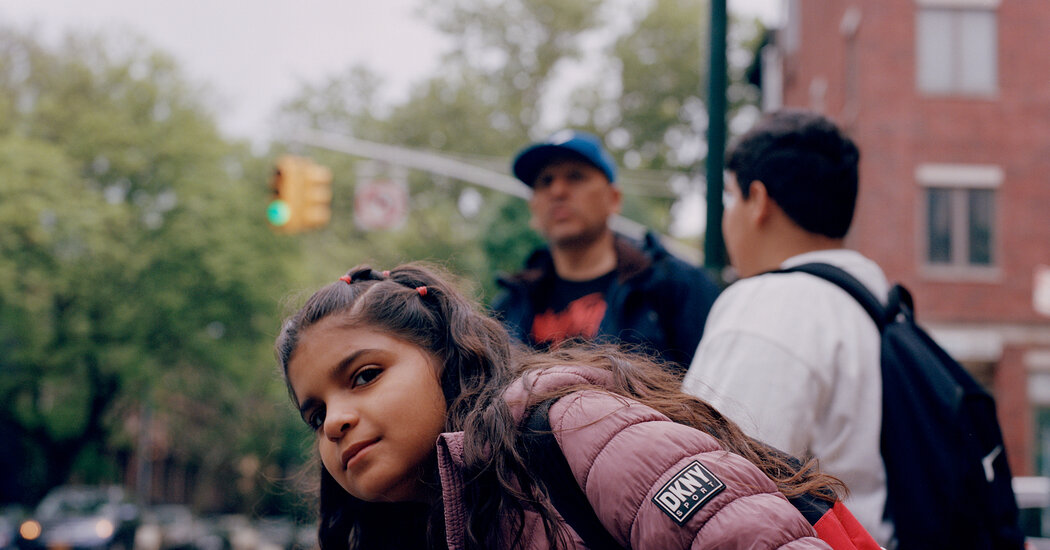Two of Ms. Ocasio’s daughters attended P.S. 46 this year: Junie, in first grade, and Olive, in kindergarten. The new students were their classmates, which Junie pointed out on their walk home one day when she recognized a girl with a family holding a sign asking for money for food. The shelter meals were terrible and were making some of the children sick. Ms. Ocasio bought the family a bucket of chicken. Afterward, Junie said, “But Mommy, you can’t buy all my friends buckets of chicken.” Ms. Ocasio had been homeless herself and lived in a shelter when her daughters were little. After nine years on a waiting list, she secured an apartment in Whitman Houses, the public housing complex zoned for P.S. 46. No, she couldn’t buy everyone dinner, but she could help the asylum seekers access the benefits they were entitled to.
Not everyone was so welcoming. Last month, after a series of dust-ups in the neighborhood over complaints of panhandling, loitering and trash, more than 200 angry residents packed a town hall about the Hall Street shelter complex where the Rodríguezes were placed. With nearly 1,000 family members and 3,000 single people, it is currently the largest concentration of migrants seeking asylum in New York City. Most of the speakers’ ire was directed toward elected officials about the number of migrants being housed, but some neighbors shared ways to support the new arrivals. The overwhelming message, though, was that the migrants were burdening the neighborhood, and residents wanted them gone.
But that has not been the sentiment of the families whose children were already at P.S. 46, although they are part of the community that’s most directly affected by the newcomers. As stabilizing as schools can be for the new arrivals, the influx — especially in the middle of the year — of so many students with complex needs, often considerable trauma and little prior schooling can also be very destabilizing for the school communities they join.
The Rodríguezes were aware of the pressure that the asylum seekers were putting on the school, and the city, and were surprised by how supportive the parents continued to be. Mr. Rodríguez was eager to help. He volunteered at food distributions. He learned to navigate the city’s online scheduling system and began securing appointments, which are required, for other migrants to get city identification cards known as NYC ID. When new families arrived at the shelter, he acted as a liaison with a local mutual aid group to secure coats and shoes in the sizes they needed. If the Rodríguezes stayed at the school, Ms. Ocasio knew she wanted to recruit Mr. Rodríguez for the P.T.A. In many ways, meeting the asylum seekers’ material needs was the easy part.
‘I Wish I Could Focus on Educating the Children’
On a Tuesday in mid-February, some of the new second graders knelt on a rug decorated with the seven continents and tried to sound out words. Rag. Lag. Bag. Their English-speaking counterparts sat at tables quietly reading chapter books, one of them absorbed in a thick novel. Later, during a math lesson on “grouping,” the Rodriguezes’ youngest child, Andrés, went to the whiteboard. He’d learned the addition-strategy at his school in Peru. His classmates applauded and, imitating the other kids, he did a victory dance in the universal language of the Fortnite computer game.
